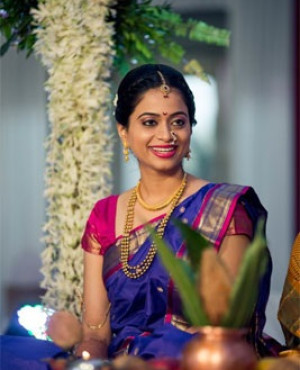
Mumbai – Thousands of tourists visit the country of India all year round. There are remarkable destinations that attract people of all ages who wish to witness and explore the distinct beauty of the local culture. There are colorful displays and festivities that showcase the grand wonders of the nation and its people. However, in the state of Western India, specifically in the Maharashtra region, the Marathi people lead quiet and simple lives.
Many people may consider this particular ethnic group as reserved and less known to interact with tourists or travelers. However, they are merely following a simple lifestyle that is at the core of their ethnic culture. They are not snobs and they do not believe in lavish lifestyles. These are but a few of the interesting traits that they share as a community. There are a lot more things to learn about them. So, who are the Marathi people?
The Maharashtrians’ History
The Marathi is an ethnolinguistic group that speak their own language (Marathi) that originated from the Southern Zone of the Indo-Aryan language family. According to historical accounts, they have been living in the Maharashtra region for millions of years but were only recognized in 1674 when their communities were noticed. That year, the Maratha warriors under Shivaji Maharaj’s leadership were instrumental in ending the Mughal rule. During this time, Shivaji founded the Maratha Empire after conquering the regions of Konkan and Desh from the Adilshahi. This led to the re-establishment of the Hindavi Swarajya, which meant the self-rule of the Hindu people.
Through the years, the ethnic group has solidified their rule by winning more battles, while establishing their culture and traditions as a complete community. Now, they are the 17th largest ethnic group in India and continue to live at some border districts like Madgaon in Goa, as well as Belgaum and Karwar in Karnataka.
A Mark of Simplicity
As part of continuing their rich traditions and culture, the Marathi follow a very simple lifestyle. They do not show extravagance or live lavishly because they continue to practice the ways taught to them by the Rajputs of Rajasthan or the Nawabs of Lucknow. This is a reflection of the way they consider hard work as the only means to reap success and not leisure or lavish acts.
Aside from this great focus on hard work, the community also believes in brotherhood, which is evident in their states. Even people who have different religious beliefs live in harmony within one community, and the Marathi do not differentiate between themselves. Thus, anyone who visits their communities can see how saints like Sai Baba, Haji Ali, and Osho have taught the people about the importance of peace and prosperity. This is a commendable trait that they hope to continue passing on from one generation to the next. If anyone truly wishes to learn about this distinct bond of the Marathi, it can be clearly seen when they interact and when they share their own experiences and beliefs.
Image from What Knot, http://whatknot.in/blog/marathi_wedding_mumbai/



